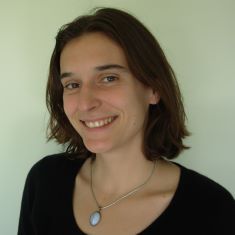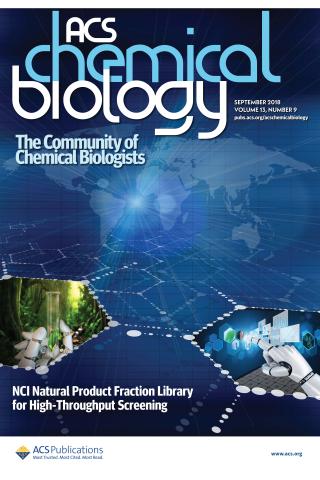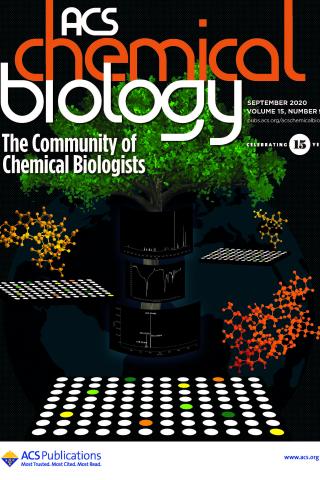
Tanja Grkovic, Ph.D.
- Center for Cancer Research
- National Cancer Institute
- Building 562, Room 201
- Frederick, MD 21702-1201
- 301-846-5688
- tanja.grkovic@nih.gov
RESEARCH SUMMARY
Dr. Grkovic is a natural product chemist with an interest in understanding the structure and function of natural products in the early stages of drug discovery. She has extensive experience in the generation of natural product libraries for high-throughput screening and the isolation and structure elucidation of small molecules from marine, plant, and microbial biota.
Areas of Expertise
Research
Our work is focused on the isolation and identification of biologically active marine and plant-sourced natural products with emphasis on the development and applications of novel technologies. Our research efforts include the use of prefractionated libraries in new cell-based and cell-free molecularly targeted high-throughput screens, structure elucidation of complex natural products involving a range of spectroscopic and spectrometric methods, and development of metabolomic and bioinformatic tools for the dereplication of natural products in complex mixtures.
Publications
- Bibliography Link
- View Dr. Grkovic's ORCID Bibliography
National Cancer Institute (NCI) Program for Natural Products Discovery: Rapid Isolation and Identification of Biologically Active Natural Products from the NCI Prefractionated Library
Creating and screening natural product libraries
NCI Program for Natural Product Discovery: A Publicly-Accessible Library of Natural Product Fractions for High-Throughput Screening
NMR fingerprints of the drug-like natural-product space identify iotrochotazine A: a chemical probe to study Parkinson's disease
Biography

Tanja Grkovic, Ph.D.
Dr. Grkovic obtained her Ph.D. degree from the University of Auckland, New Zealand, followed by postdoctoral appointments at the Molecular Targets Laboratory, National Cancer Institute, and the Eskitis Institute for Drug Discovery in Brisbane, Australia. She spent six years as a Senior Scientist in the Natural Products Support Group at the Frederick National Laboratory for Cancer Research before joining the Molecular Targets Program in 2020 as a Visiting Staff Scientist in the Natural Products Chemistry Section.
Covers

NCI Program for Natural Product Discovery: A publicly-accessible library of natural product fractions for high-throughput screening
The US National Cancer Institute's (NCI) Natural Product Repository is one of the world's largest, most diverse collections of natural products containing over 230,000 unique extracts derived from plant, marine, and microbial organisms that have been collected from biodiverse regions throughout the world. Importantly, this national resource is available to the research community for the screening of extracts and the isolation of bioactive natural products. However, despite the success of natural products in drug discovery, compatibility issues that make extracts challenging for liquid handling systems, extended timelines that complicate natural product-based drug discovery efforts and the presence of pan-assay interfering compounds have reduced enthusiasm for the high-throughput screening (HTS) of crude natural product extract libraries in targeted assay systems. To address these limitations, the NCI Program for Natural Product Discovery (NPNPD), a newly launched, national program to advance natural product discovery technologies and facilitate the discovery of structurally defined, validated lead molecules ready for translation will create a prefractionated library from over 125,000 natural product extracts with the aim of producing a publicly-accessible, HTS-amenable library of >1,000,000 fractions. This library, representing perhaps the largest accumulation of natural-product based fractions in the world, will be made available free of charge in 384-well plates for screening against all disease states in an effort to reinvigorate natural product-based drug discovery.
Thornburg CC, Britt JR, Evans JR, Akee RK, Whitt JA, Trinh SK, Harris MJ, Thompson JR, Ewing TL, Shipley SM, Grothaus PG, Newman DJ, Schneider JP, Grkovic T, O'Keefe BR. NCI Program for Natural Product Discovery: A publicly-accessible library of natural product fractions for high-throughput screening. ACS Chem Biol 13: 2484-2497, 2018.

National Cancer Institute (NCI) Program for Natural Products Discovery: Rapid isolation and identification of biologically active natural products from the NCI prefractionated library
An automated, high-capacity, and high-throughput procedure for the rapid isolation and identification of biologically active natural products from a prefractionated library is presented. The semipreparative HPLC method uses 1 mg of the primary hit fraction and produces 22 subfractions in an assay-ready format. Following screening, all active fractions are analyzed by NMR, LCMS, and FTIR, and the active principle structural classes are elucidated. In the proof-of-concept study, we show the processes involved in generating the subfractions, the throughput of the structural elucidation work, as well as the ability to rapidly isolate and identify new and biologically active natural products. Overall, the rapid second-stage purification conserves extract mass, requires much less chemist time, and introduces knowledge of structure early in the isolation workflow.
Grkovic T, Akee RK, Thornburg CC, Trinh SK, Britt JR, Harris MJ, Evans JR, Kang U, Ensel S, Henrich CJ, Gustafson KR, Schneider JP, O'Keefe BR. National Cancer Institute (NCI) Program for Natural Products Discovery: Rapid isolation and identification of biologically active natural products from the NCI prefractionated library. ACS Chem Biol 15: 1104-1114, 2020.

Creating and screening natural product libraries
The National Cancer Institute of the United States (NCI) has initiated a Cancer Moonshot program entitled the NCI Program for Natural Product Discovery. As part of this effort, the NCI is producing a library of 1 000 000 partially purified natural product fractions which are being plated into 384-well plates and provided to the research community free of charge. As the first 326 000 of these fractions have now been made available, this review seeks to describe the general methods used to collect organisms, extract those organisms, and create a prefractionated library. Importantly, this review also details both cell-based and cell-free bioassay methods and the adaptations necessary to those methods to productively screen natural product libraries. Finally, this review briefly describes post-screen dereplication and compound purification and scale up procedures which can efficiently identify active compounds and produce sufficient quantities of natural products for further pre-clinical development.
Wilson BAP, Thornburg CC, Henrich CJ, Grkovic T, O'Keefe BR. Creating and screening natural product libraries. Nat Prod Rep 2020.

